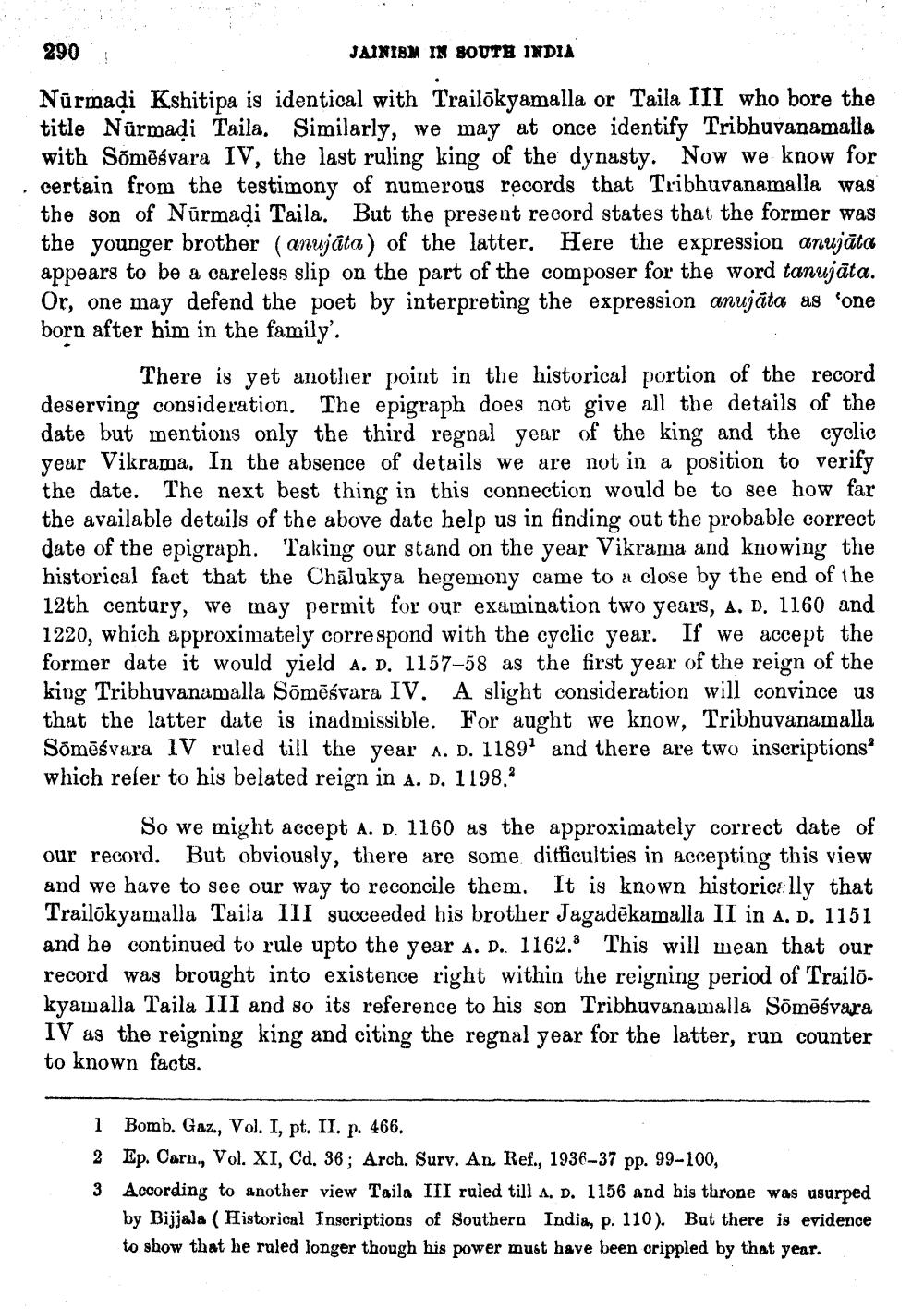________________
290!
JAINIBM IN SOUTH INDIA Nūrmadi Kshitipa is identical with Trailökyamalla or Taila III who bore the title Nūrmadi Taila. Similarly, we may at once identify Tribhuvanamalla with Sõmāśvara IV, the last ruling king of the dynasty. Now we know for certain from the testimony of numerous records that Tribhuvanamalla was the son of Nūrmadi Taila. But the present record states that the former was the younger brother (anujāta) of the latter. Here the expression anujāta appears to be a careless slip on the part of the composer for the word tanujāta. Or, one may defend the poet by interpreting the expression anujáta as 'one born after him in the family'.
There is yet another point in the historical portion of the record deserving consideration. The epigraph does not give all the details of the date but mentions only the third regnal year of the king and the cyclic year Vikrama. In the absence of details we are not in a position to verify the date. The next best thing in this connection would be to see how far the available details of the above date help us in finding out the probable correct date of the epigraph. Taking our stand on the year Vikrama and knowing the historical fact that the Chālukya hegemony came to a close by the end of the 12th century, we may permit for our examination two years, a. D. 1160 and 1220, which approximately correspond with the cyclic year. If we accept the former date it would yield A. D. 1157-58 as the first year of the reign of the king Tribhuvanamalla Sõmēsvara IV. A slight consideration will convince us that the latter date is inadmissible. For aught we know, Tribhuvanamalla Somēśvara IV ruled till the year A. d. 11891 and there are two inscriptions which reler to his belated reign in A. D. 1198.9
So we might accept A. D. 1160 as the approximately correct date of our record. But obviously, there are some difficulties in accepting this view and we have to see our way to reconcile them. It is known historically that Trailökyamalla Taila III succeeded his brother Jagadēkamalla II in A. D. 1151 and he continued to rule upto the year a. D. 1162. This will mean that our record was brought into existence right within the reigning period of Trailokyamalla Taila III and so its reference to his son Tribhuvanamalla Somāśvara IV as the reigning king and citing the regnal year for the latter, run counter to known facts.
i 2 3
Bomb. Gaz., Vol. I, pt. II. p. 466. Ep. Carn., Vol. XI, Cd. 36; Arch. Surv. An. Ref., 1936-37 pp. 99-100, According to another view Taila III ruled till A, D. 1156 and his throne was usurped by Bijjala ( Historical Inscriptions of Southern India, p. 110). But there is evidence to show that he ruled longer though his power must have been crippled by that year.




